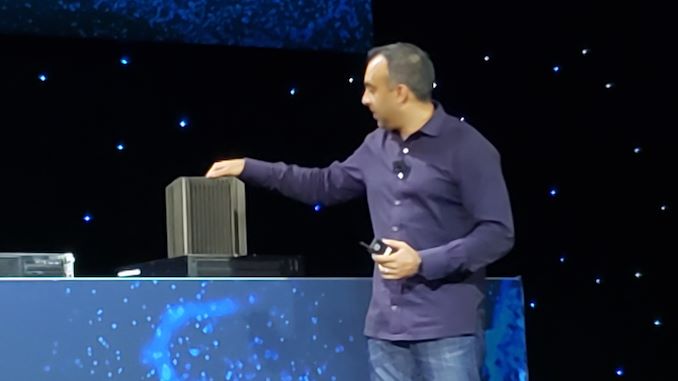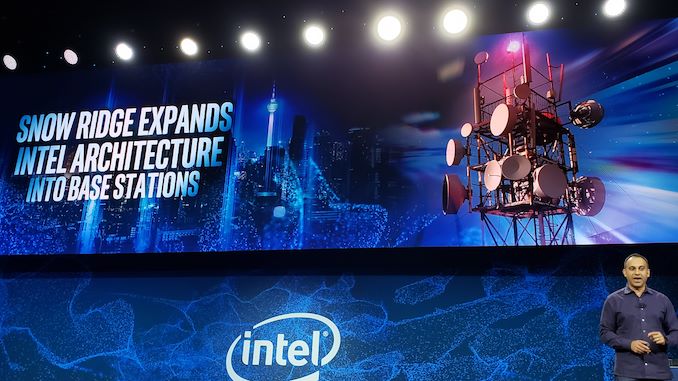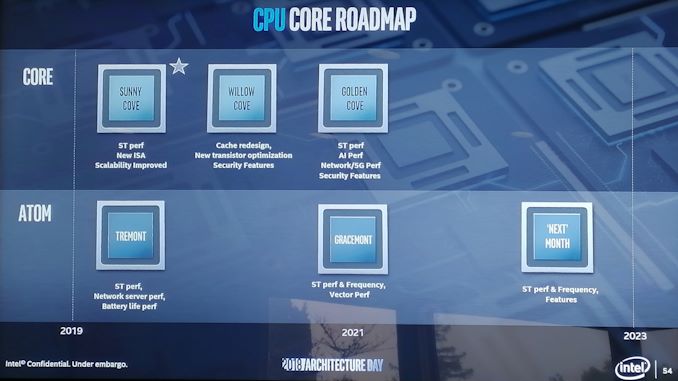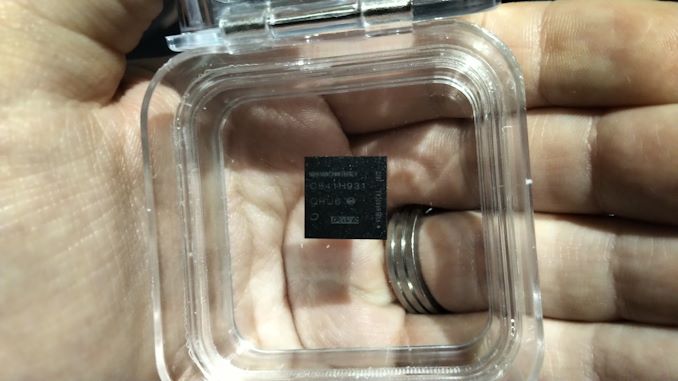Next Generation Intel Atom Tremont: Potential L3 Cache
by Dr. Ian Cutress on July 15, 2019 8:00 AM EST
Intel has already disclosed that it will have a next generation Atom core, code named Tremont, which is to appear in products such as the Foveros-based hybrid Lakefield, as well as Snow Ridge designed for 5G deployments. In advance of the launch of the core and the product, it is customary for some documentation and tools to be updated to prepare for it; in this case, one of those updates has disclosed that the Tremont core would contain an L3 cache – a first for one of Intel’s Atom designs.
01.org is an Intel website which hosts all of its open source projects. One of those projects is perfmon, a simple performance monitoring tool that can be used by developers to direct where code may be bottlenecked by either throughput, memory latency, memory bandwidth, TLBs, port allocation, or cache hits/misses. In this case, the profiles for Snow Ridge have been uploaded to the platform, and one of the counters provided includes provisions for L3 cache monitoring. This provision is directly listed under the Tremont heading.
Enabling an L3 cache on Atom does two potential things to Intel’s design: it adds power, but also adds performance. By having an L3, it means that data in the L3 is quicker to access than it would be in memory, however there is an idle power hit by having L3 present. Intel can mitigate this by enabling parts of the L3 to be powered on as needed, but there is always a tradeoff. There can also be a hit to die area, so it will be interesting to see how Intel has changed the microarchitecture of it’s Atom design. There is also no indication if the Tremont L3 cache is an inclusive cache, or a non-inclusive cache, or if it can be pre-fetched into, or if it is shared between cores or done on a per-core basis.
Intel’s Atom roadmap, as disclosed last year at Architecture day, shows that the company is planning several more generations of Atom core, although beyond Tremont we get Gracemont in 2021, and beyond that is ‘increased ST Perf, Frequency, Features’ listed around 2023. In that time, Intel expects to launch Sunny Cove, Willow Cove, and Golden Cove on the Core side.
The first public device with Tremont inside is expected to be the Core/Atom hybrid Lakefield processor, which uses Intel’s new Foveros stacking technology. We know that this design will have one Sunny Cove core and pair it with four Tremont cores. Intel expects chip production of Lakefield for consumer use by the end of the year.
Related Reading
- Intel's Architecture Day 2018: The Future of Core, Intel GPUs, 10nm, and Hybrid x86
- Intel Lists New Atom Core: Tremont to Come After Goldmont Plus
- Intel’s Keynote at CES 2019: 10nm, Ice Lake, Lakefield, Snow Ridge, Cascade Lake
- Intel's Interconnected Future: Combining Chiplets, EMIB, and Foveros
Source: InstLatX64, 01.org














66 Comments
View All Comments
edzieba - Monday, July 15, 2019 - link
Could the Tremont cores on Lakefield be talking to the L3 on the Sunny Cove cores, rather than having their own L3?HStewart - Monday, July 15, 2019 - link
I pretty sure that the L3 cores are on the Atom, the source links do not mention Lakefield but instead Snow Ridge.R0H1T - Monday, July 15, 2019 - link
Frankly this is one of the more exciting products from Intel in God knows how long? I also remember how a number of people dissed ARM & Big Little especially on AT(forums) now lo & behold 🙄Anyway good luck to Intel, as an AMD fan I'd love Intel to bring more competition in this space & perhaps drive AMD towards bringing their (revised) version of Cat cores back from the dead, or K12 for that matter!
isthisavailable - Monday, July 15, 2019 - link
I think apple’s A13/14 would be fasterPeachNCream - Monday, July 15, 2019 - link
It's important for Intel to at least attempt to compete. It drives ARM-derived development harder and gets us better useful products that are actually relevant to consumers. With that said, Atom cores can probably find a home in embedded devices and (hopefully) low end notebook computers that don't need cooling fans. Like seriously, once you use a fanless laptop, it's really hard to put up with anything that has a fan. It's like going back a decade.ads295 - Monday, July 15, 2019 - link
I suppose you think devices with thick bezels on screens must be like going back a decade too.PeachNCream - Monday, July 15, 2019 - link
Not really. I prefer a certain amount of bezel around a screen on a laptop anyway so I don't have incidental finger smudges on the screen and in the pricing class of computer I'm prone to purchase (sub-$400), there just aren't serious efforts made to eliminate bezels anyway.V900 - Wednesday, July 17, 2019 - link
Good call!Nothing wrong with a little bezel.
Aside from the fingerprint issue you mentioned, it also increases the structural stability and makes for a more durable laptop.
Namisecond - Friday, November 1, 2019 - link
You may be surprised. Acer and Asus makes laptop that just barely fit into that price range that made some big strides in reducing bezel size.The Acer Swift 1 SF114-32-xxxx series can run for less than $300 now. IPS screen and storage upgradeable too.
V900 - Wednesday, July 17, 2019 - link
Bezels are seriously a dumb thing to prioritize. They have numerous advantages, and only cosmetics as an advantage.